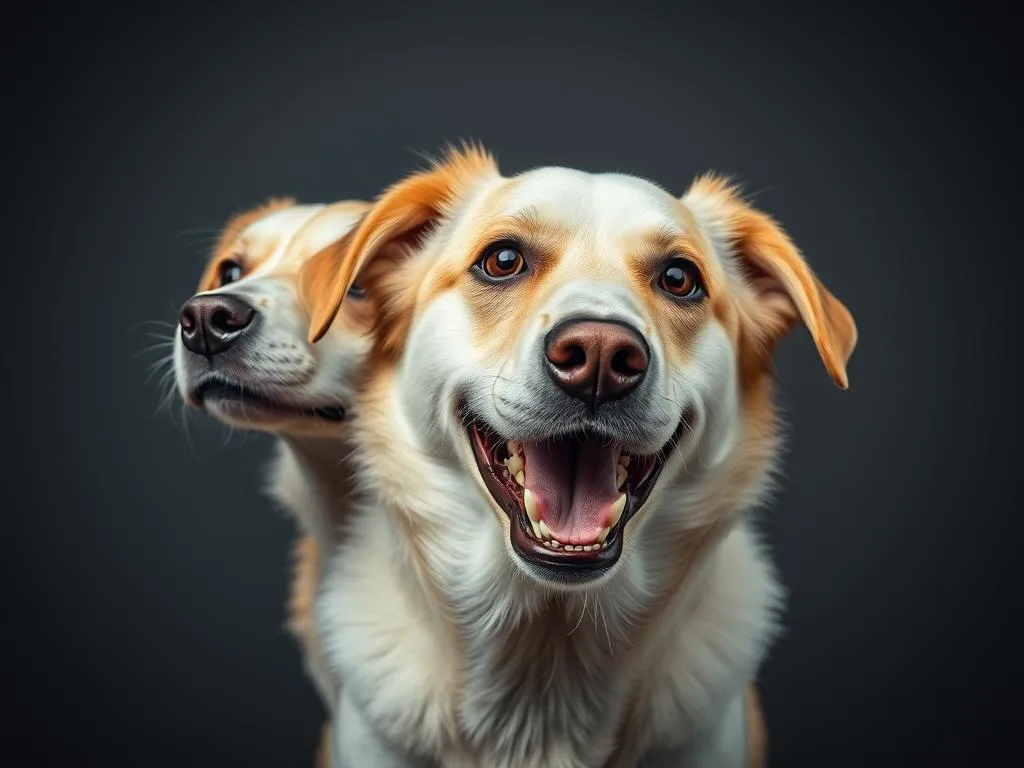
Fear is an intrinsic part of life, even for our furry companions. Did you know that dogs experience a wide range of emotions, including fear, much like humans do? Understanding how fear manifests in our dogs is essential for fostering a strong, trusting relationship with them. Fear responses are instinctive reactions that dogs exhibit when they feel threatened or anxious. Recognizing these behaviors can be a game-changer for dog owners and trainers alike.
In this article, we will delve into the four fear responses in dogs: the fight response, flight response, freeze response, and fiddle response. Each of these responses plays a crucial role in how dogs cope with fear, and understanding them can help us better support our pets.
The Nature of Fear in Dogs
Understanding Canine Emotions
Dogs are more emotionally complex than many people realize. Their emotional range includes happiness, sadness, joy, and, notably, fear. Like humans, dogs may fear unfamiliar situations, loud noises, or even specific objects. Fear serves as a natural survival mechanism; it prompts dogs to react in ways that can protect them from potential dangers.
The Role of Instincts
Instinct plays a significant role in how dogs respond to fear. For instance, wild dogs have innate survival instincts that dictate their reactions to threats. These instincts still exist in domesticated dogs, albeit in a modified form. While domesticated dogs may not face the same dangers as their wild counterparts, their instincts still guide their fear responses.
Factors Influencing Fear Responses
Several factors can influence a dog’s fear responses:
- Genetics and Breed Tendencies: Some breeds are more predisposed to fearfulness than others. For example, herding breeds may be more sensitive to environmental stimuli.
- Past Experiences and Trauma: A dog that has experienced trauma, such as abuse or neglect, may exhibit heightened fear responses.
- Environmental Factors: A dog’s living conditions and socialization experiences play a vital role in shaping their emotional responses.
Understanding these factors can help us better interpret our dogs’ behaviors.
The Four Fear Responses in Dogs
Fight Response
The fight response is a common reaction when a dog feels cornered or threatened. In this scenario, the dog may decide to confront the perceived danger head-on.
- Behavioral Indicators: Look for signs such as growling, barking, lunging, and showing teeth. A dog displaying this response may also have a stiff posture and raised hackles.
- Contextual Scenarios: Situations that may trigger this response include encountering an aggressive dog, feeling threatened by a stranger, or experiencing sudden loud noises.
Understanding the fight response can help owners intervene appropriately, ensuring both their dog’s safety and the safety of others.
Flight Response
In contrast to the fight response, the flight response involves a dog opting to escape from danger instead of confronting it.
- Behavioral Indicators: Signs of the flight response include hiding, running away, or attempting to flee from the situation. A dog may also exhibit signs of distress, such as whining or excessive panting.
- Contextual Scenarios: Common triggers for the flight response include fireworks, thunderstorms, or unfamiliar environments.
Recognizing this response is crucial, as dogs that exhibit it may be at risk of running away or becoming lost if they feel threatened.
Freeze Response
When faced with a perceived threat, some dogs may choose to freeze rather than confront or flee. The freeze response can be an instinctual way to avoid detection by a predator.
- Behavioral Indicators: Signs of the freeze response include a stiff body, wide eyes, and a lack of movement. The dog may also hold its breath and appear to be “shut down.”
- Contextual Scenarios: Dogs may freeze in overwhelming situations, such as during a loud party or when faced with an aggressive dog.
Understanding the freeze response is vital, as it indicates a level of fear that may require immediate attention and intervention.
Fiddle Response
The fiddle response is less commonly discussed but equally important. This response involves repetitive, nervous behaviors that dogs exhibit when they are anxious or fearful.
- Behavioral Indicators: Dogs may engage in pacing, excessive licking, or other repetitive actions. This response can sometimes be mistaken for normal playfulness, but it typically arises from anxiety.
- Contextual Scenarios: The fiddle response might occur during stressful situations such as vet visits, car rides, or when a dog is left alone.
Recognizing the fiddle response can help owners identify when their dog is struggling with anxiety and may need support.
Identifying Fear Responses in Your Dog
Observing Body Language
One of the most effective ways to identify fear responses in your dog is by observing their body language. Key signs to look for include:
- Ears: Dropped or pinned back against the head.
- Tail: Tucked between the legs or held high and stiff.
- Eyes: Wide or darting; may also exhibit a “hard stare.”
- Mouth: Closed tightly or open with excessive panting.
Awareness of these subtle cues can provide valuable insights into your dog’s emotional state.
Understanding Context
It’s essential to assess the situation leading to a fear response. Understanding the context can help determine potential triggers and stressors. Some common triggers include:
- Loud noises (e.g., fireworks, thunder)
- Unfamiliar people or dogs
- New environments or changes in routine
By identifying these triggers, owners can work to minimize their dog’s exposure to fear-inducing situations.
Keeping a Fear Diary
Keeping a fear diary is an effective tool for tracking and documenting your dog’s fear responses. This can help you identify patterns and triggers over time.
- How to Track: Note when your dog displays fear responses, the context, and any accompanying behaviors.
- Benefits: This documentation can help you and a professional identify specific issues and develop a tailored training plan.
Addressing Fear Responses
Training Techniques
Addressing fear responses in dogs often requires a combination of training techniques:
- Desensitization: Gradually exposing your dog to fear triggers at a manageable level can help reduce their anxiety over time.
- Counter-conditioning: By associating positive experiences with previously feared situations, you can help your dog change their emotional response. For example, giving treats during exposure to a trigger can create a more positive association.
- Positive Reinforcement: Rewarding calm behavior can reinforce desired behaviors and help your dog feel more secure.
Creating a Safe Environment
Creating a safe environment for your dog can significantly alleviate fear responses. Here are some tips:
- Safe Space: Designate a quiet area in your home where your dog can retreat when feeling anxious. This space should be comfortable and free of loud noises or disturbances.
- Routine: Maintaining a consistent routine can help your dog feel more secure and less anxious.
Seeking Professional Help
If your dog exhibits severe fear responses, consider seeking professional help. A dog trainer or behaviorist can provide valuable guidance and support tailored to your dog’s specific needs.
Preventing Fear Responses
Early Socialization
Early socialization is crucial for preventing fear responses in dogs. Exposing puppies to various environments, people, and other animals can help them develop confidence and reduce anxiety.
- Activities: Consider puppy training classes, playdates with other dogs, and exposure to different sounds and sights.
Consistent Training
Ongoing training is essential for building a strong bond between owner and dog. Regular sessions can reinforce positive behaviors and help your dog feel more secure in their environment.
Monitoring Changes
As dogs age, their behavior may change. It’s crucial to monitor your dog’s emotional responses and adapt your training and care as needed.
Conclusion
Understanding the four fear responses in dogs is vital for any dog owner. By recognizing these responses, you can help your dog navigate their fears and create a more positive living experience for them. Whether through training, creating a safe environment, or seeking professional help, there are many strategies you can employ to support your furry friend. With patience and understanding, you can help manage these fear responses and foster a stronger bond with your dog.









